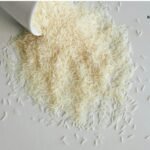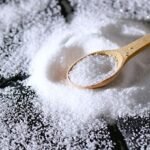Now Reading: Insane Calorie Burn: What One Mile of Running Does to Your Body
- 01
Insane Calorie Burn: What One Mile of Running Does to Your Body

Insane Calorie Burn: What One Mile of Running Does to Your Body
Running just one mile can spark massive calorie burn and full-body benefits. Learn how this simple workout transforms your metabolism and health fast.
Table of Contents
Running isn’t just a way to break a sweat—it’s a dynamic workout that can spark an insane calorie burn while improving your overall health. In this post, we’ll explore how one mile running can transform your body by diving into average calorie burn, the key calorie burn factors, MET calculation techniques, and actionable tips to boost running efficiency through strategies like interval training. Whether you’re a beginner or a seasoned runner, this guide is designed to add value to your US fitness journey.
Understanding the Science Behind Your Calorie Burn
When you set out for one mile running, your body kicks into high gear:
- Metabolic Activation: Your muscles begin converting glycogen and fat into energy almost instantly.
- Afterburn Effect (EPOC): Your metabolism stays elevated even after you stop moving, leading to extra calorie burn.
- Hormonal Response: Increased levels of adrenaline and endorphins not only improve your mood but also amplify your metabolic rate.
This combination creates the conditions for what many call an insane calorie burn—a process that’s both dynamic and multifaceted.
Average Calorie Burn for One Mile Running
There’s no one-size-fits-all answer when it comes to the average calorie burn during a mile, as individual factors play an important role. Nevertheless, here’s a commonly followed benchmark based on body weight:
| Body Weight (lbs) | Approximate Calories Burned per Mile |
|---|---|
| 125 | ~80 calories |
| 155 | ~100 calories |
| 185 | ~120 calories |
For some runners, the “1 calorie per pound” rule is a quick approximation for more intense sessions. This means that if you weigh 155 pounds, you might burn around 155 calories during a vigorous run. Understanding these calorie burn factors can help you personalize your workout goals.
Key Calorie Burn Factors Influencing Your Performance
A variety of calorie burn factors come into play during your run, including:
- Body Weight & Composition: Heavier runners with more muscle mass typically expend more calories as they work harder to move their body weight.
- Running Pace & Intensity: Increasing your speed elevates your heart rate, leading to a more significant calorie burn and afterburn effect.
- Terrain & Environment: Hills, uneven trails, and varying weather conditions can all increase the energy cost of one mile running.
- Running Efficiency: Good form minimizes wasted energy, while poor mechanics might force your body to work harder than necessary.
- Age, Gender & Metabolic Rate: Metabolic variability is natural—factors like genetics, gender, age, and overall health contribute to how efficiently your body burns calories.
By understanding these factors, you can optimize your workout to achieve a more effective and targeted calorie burn.
How to Use MET Calculation for Accurate Calorie Estimates
A practical approach to estimating your calorie burn is through MET calculation—the Metabolic Equivalent of Task. The formula is:
Calories Burned=MET Value×Weight in kg×Time in hours\text{Calories Burned} = \text{MET Value} \times \text{Weight in kg} \times \text{Time in hours}
For example, consider a 70 kg individual running one mile in 10 minutes (approximately 0.167 hours). With a MET value of about 9.8 for a moderate pace:
- Calculation:
9.8×70×0.167≈114 calories9.8 \times 70 \times 0.167 \approx 114 \text{ calories}
This method provides you with a personalized estimate of your calorie burn, letting you gauge the effectiveness of your one mile running and adjust your workout intensity accordingly.
Pro Tips to Boost Running Efficiency with Interval Training
Maximizing your workout isn’t just about covering the distance—it’s about smart strategies that turn a simple run into an engine for calorie burn. Here are expert tips to enhance your running efficiency:
- Implement Interval Training: Alternate between high-intensity sprints and a comfortable pace to spike your heart rate and sustain an elevated calorie burn.
- Add Incline or Hill Running: Incorporate hills or treadmill inclines into your routine—they force your muscles to work harder, amplifying the overall burn.
- Focus on Running Form: Regularly refine your technique to reduce energy waste and boost efficiency.
- Strength and Cross-Train: Integrate weight training and other aerobic exercises to build muscle, which keeps your metabolism revved up.
- Use a Fitness Tracker: Monitor your pace and heart rate to ensure you’re in the optimal zone for maximum calorie burn.
- Stay Hydrated and Eat Well: Your body needs fuel—make sure you’re well-nourished before and after your workouts.
- Vary Your Routes: Mixing up your scenery with different routes challenges your body in new ways, preventing adaptation and plateaus.
These tips, when combined with consistent interval training, can significantly improve your running efficiency and make each mile count.
Conclusion
Every mile you run is an opportunity to trigger that insane calorie burn and drive your fitness goals forward. By understanding the science behind one mile running, learning about the average calorie burn, delving into the key calorie burn factors, using simple MET calculations, and applying proven interval training techniques, you can transform your everyday run into a powerful workout. Lace up, hit the pavement, and let your journey to superior running efficiency begin—one mile at a time.











